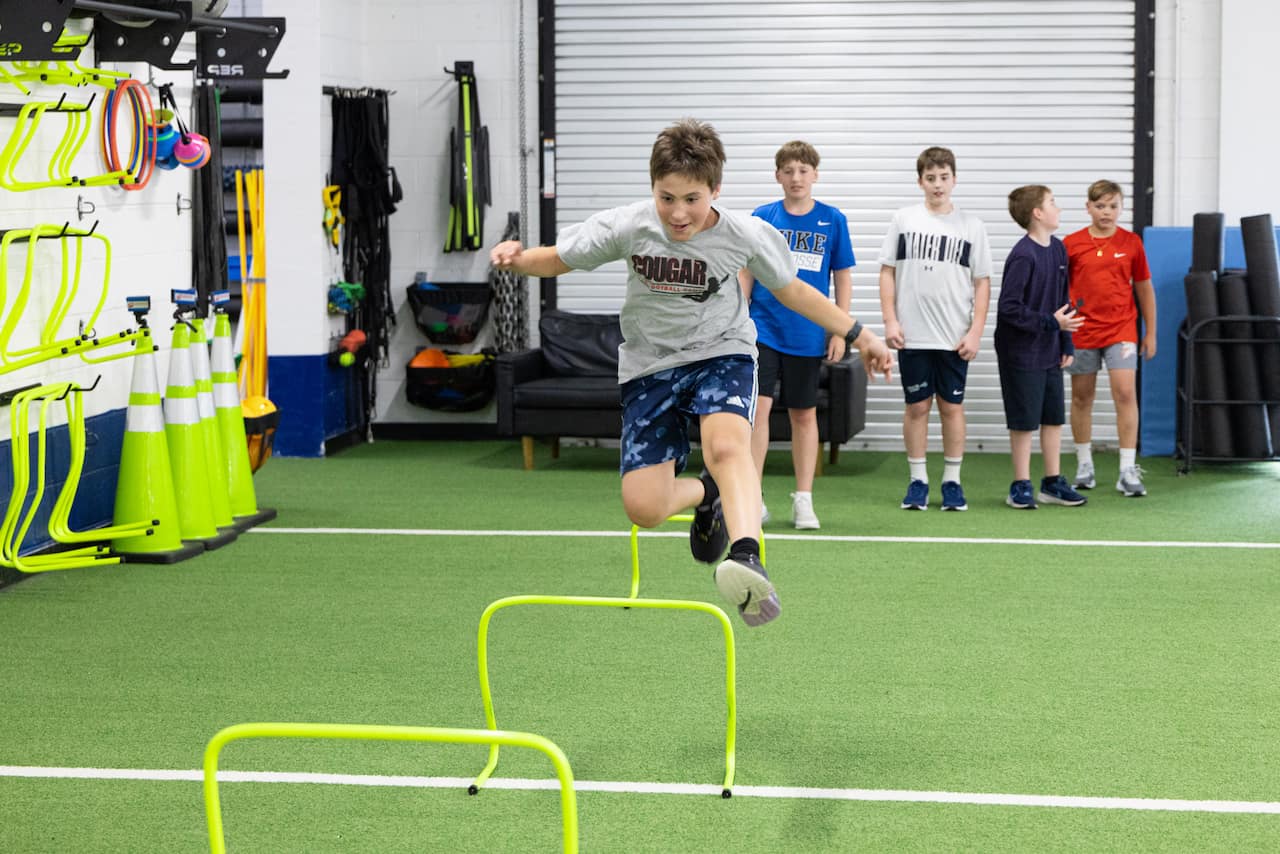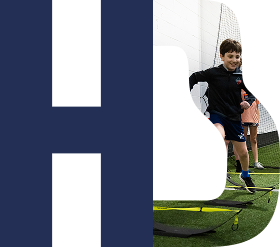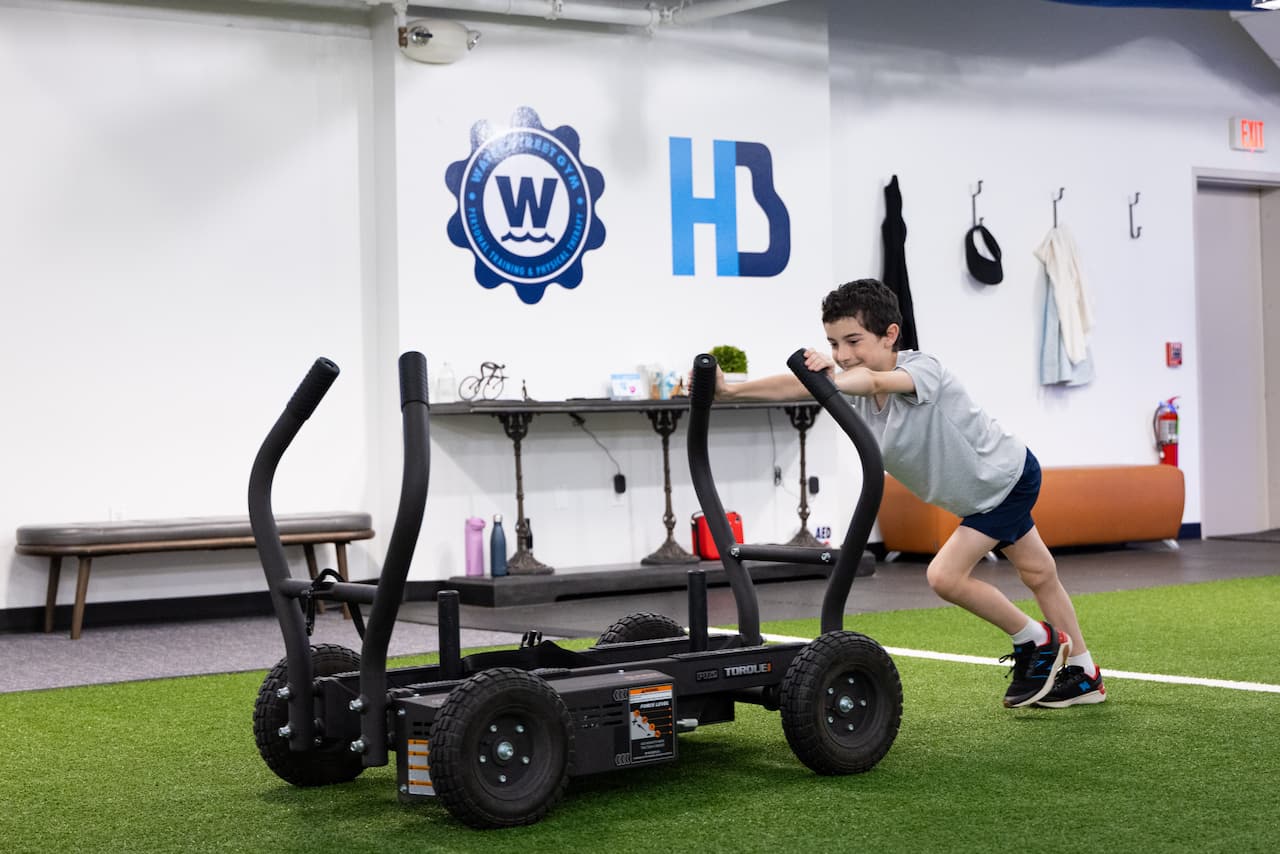As the fall sports season gets underway across the DMV, an increasing number of parents are seeking clarity on a key question: When is the appropriate time for my middle schooler to begin strength and conditioning? With youth sports training becoming more specialized, and structured programs starting at younger ages, it is understandable that this topic is often surrounded by curiosity, concern and a range of conflicting advice.
At Healthy Baller, we work with athletes of all ages and skill levels, and we understand the unique considerations involved in training middle school athletes.
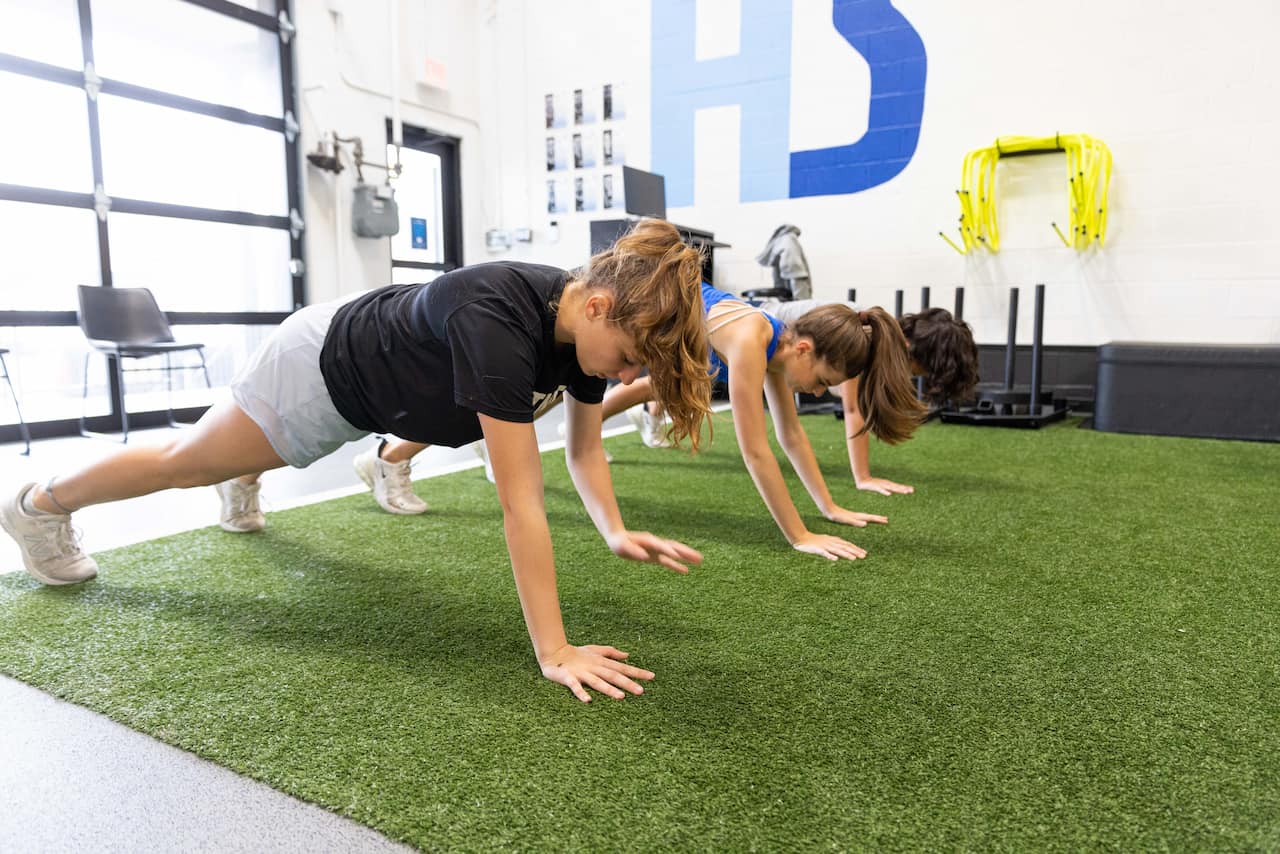
In this blog, we’ll explore when and how to introduce strength and conditioning safely, what to expect from a well-designed program and how to set youth athletes up for long-term success.
Why Middle School is a Crucial Window for Development
Middle school represents a pivotal stage in a young person’s development, both physically and psychologically. It’s a period marked by rapid growth, hormonal changes and significant neuromuscular development. These changes create what many experts refer to as a “sensitive window” for motor learning, where young athletes are especially receptive to building coordination, balance and movement efficiency.
Building the Foundation for Lifelong Athletic Performance
This stage aligns with a key phase in the Long-Term Athletic Development (LTAD) model, which emphasizes age-appropriate, progression-based training that builds the foundation for future performance. This means, rather than focusing solely on competition outcomes, LTAD encourages athletes to develop movement literacy, physical confidence and a broad base of athletic skills.
Training to Develop
We believe this is the ideal time to focus on training to develop, not just training to compete. Middle schoolers benefit most from programs that prioritize functional movement, injury reduction and confidence-building, rather than early specialization or excessive intensity. By reinforcing proper technique and body awareness at this stage, young athletes are better prepared for the demands of high school sports and beyond.
Strength Training for Youth: Separating Fact from Fiction
As strength and conditioning becomes a bigger part of the youth sports experience, it is important to separate long-standing myths from evidence-based best practices, especially when it comes to training middle school athletes.
- Myth #1: Strength Training is Dangerous
Despite growing awareness around youth sports performance and training, some persistent myths continue to cause hesitation. Chief among them is the belief that strength training is unsafe for youth athletes. - Myth #2: It Stunts Growth
Another common misconception is that lifting weights during adolescence can hinder growth or damage developing joints.
What Sport Science Actually Says…
In reality, when strength training is introduced in a safe, structured, and age-appropriate way, it not only avoids harm – it actively promotes healthy physical and psychological development. Leading authorities such as the National Strength and Conditioning Association (NSCA) and the American Academy of Pediatrics (AAP) both endorse supervised resistance training sessions for youth, citing well-documented benefits including improved strength, coordination, injury reduction and self-esteem
What Strength Training Looks Like at Healthy Baller
At our training centers, strength training for middle school athletes focuses on movement quality, not maximum weight. Rather than jumping into heavy lifting, our youth athletes master bodyweight exercises such as squats, lunges, planks, carries, pushups and rows. We emphasize control, stability and proper form – building a strong foundation that supports long-term athletic performance.
By prioritizing technique over intensity, our trained coaches help young athletes train smarter, stay safe and develop the confidence they need to thrive in a specific sport and in life.

The Benefits of Starting Strength & Conditioning Early
Introducing strength and conditioning during the middle school years can offer powerful benefits that go far beyond physical fitness and strength. At this stage, athletes are developing rapidly, both physically and cognitively, which makes it an ideal time to lay the foundation for safe, effective movement and long-term athletic success. Moving beyond athletics, they are developing healthy life habits making fitness a priority in their life at any early age.
Stronger Fundamentals, Better Movement Mechanics
Middle school athletes are still refining coordination and motor control. Structured training at this age helps instill proper form in key movement patterns, such as squats, hinges, pushes and pulls, creating efficient movers who are ready to progress safely.
Mitigate Injury Risk During Growth Spurts
As bones grow faster than muscles during adolescence, athletes are more prone to injuries. Targeted strength and mobility work helps reduce these risks by improving joint stability, balance and muscular control.
Building Confidence From the Inside Out
Beyond physical gains, strength training also improves body awareness, self-image and overall confidence. When young athletes feel stronger and more capable, their mindset and performance follow suit.
Boosting Performance Without Burning Out
Foundational strength supports sport-specific skills such as speed, agility and power, while helping athletes avoid the physical strain and mental pressure often associated with early sport specialization. It’s about preparing the body to perform, not pushing it too far too soon.
Developing Focus and Accountability
A well-run training program teaches discipline, consistency and goal-setting – skills that translate directly into school, sports and everyday life. Properly designed youth sports training programs help middle schoolers develop physically and mentally, setting them up for improved athletic performance whether they aim to play in college or simply enjoy a healthy, active lifestyle.
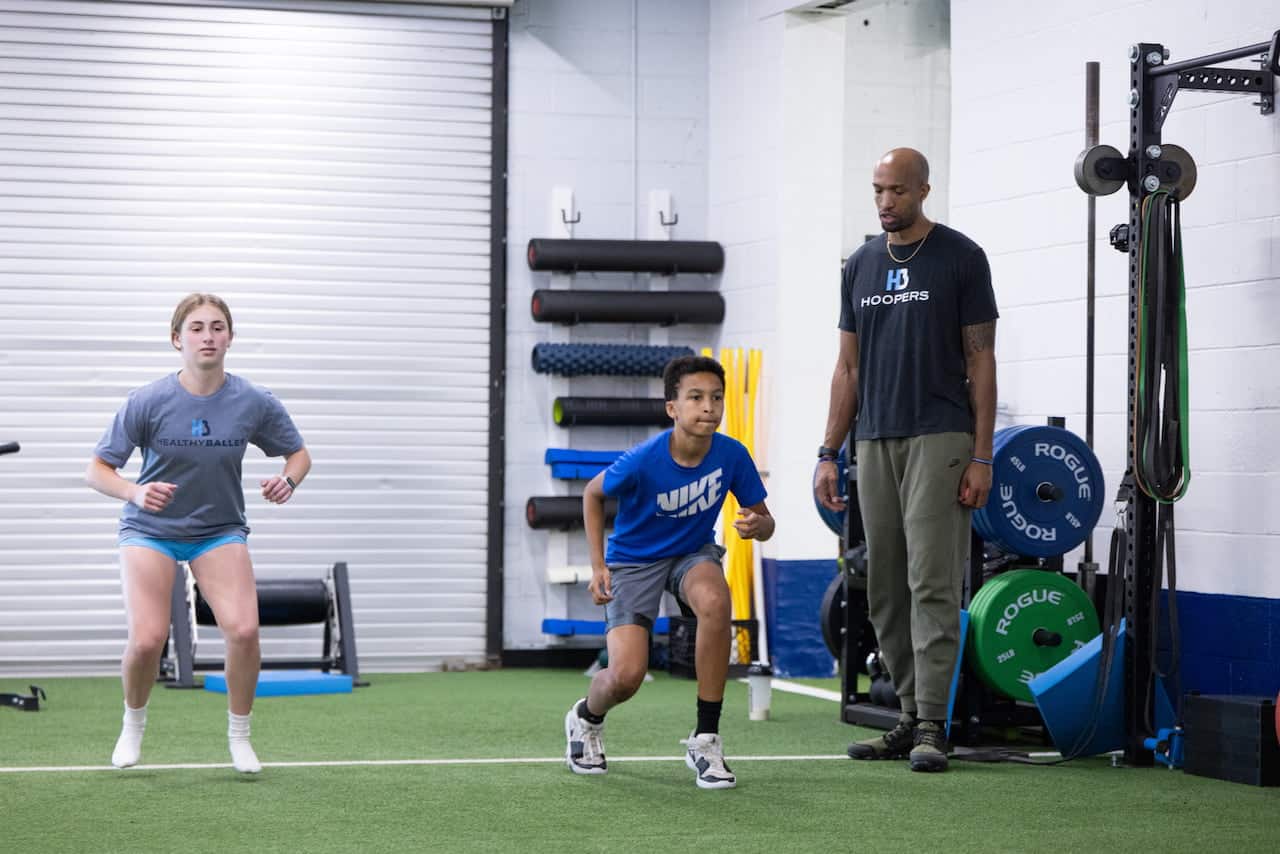
What Does an Age-Appropriate Strength Program Look Like?
Not all strength training is created equal, especially for middle school athletes. At this stage, it’s critical that programs are tailored to their developmental needs, focusing on movement quality, safety and long-term progress rather than intensity or load.
1. Master the Basics: Movement First, Weight Later
For middle school athletes, the most effective strength and conditioning programs don’t start with heavy weights – they start with movement quality. At our training centres, our coaches, many of whom are experienced athletes, focus on teaching young people how to move well before asking them to move more. Our progression-based approach ensures that every athlete builds strength safely, confidently and at their own pace.
2. Start with a Strong Assessment
Every athlete begins with a movement screening and evaluation. This allows our coaching team to assess posture, mobility and key movement patterns to design the most effective path forward.
3. Train for Life and Sport
We emphasize core functional movements, such as hinge, squat, push, pull and carry, that translate directly into sport performance on the playing field and everyday life. This foundational work supports long-term development and helps reduce risk of injuries.
4. Tools That Match the Athlete
Rather than jumping into heavy lifting, our programs begin with bodyweight exercises and resistance bands to establish control, coordination and strength in a safe and manageable way.
5. Keep It Fun, Keep It Moving
Young athletes thrive when training is engaging. We incorporate games, dynamic drills and athletic challenges to keep sessions fun, high-energy and focused on skill development.
6. Flexible Formats for Every Athlete
We offer multiple training options, including private, semi-private, small group and team sessions to meet athletes where they are and help them grow in the environment that suits them best.
When is the “Right” Time to Start?
There’s no one-size-fits-all answer to when a young athlete should begin strength and conditioning. While age can be a general guideline, the most important factor is individual readiness, both physically and mentally. Some key signs that your middle school athlete may be ready to start include:
- Showing genuine interest in training or improving performance.
- Enjoying physical activity and being active outside of organized sports.
- Expressing a desire to improve the way they move on the field/court.
- Demonstrating the ability to follow instructions and stay focused during structured sessions.
Why Fall is the Perfect Time to Start Training?
For many families, fall is an ideal time to begin. It offers them a chance to build a strong athletic foundation before the demands of winter or spring sports ramp up. Starting early in the school year also allows for more consistent training, which leads to better long-term results.
Supporting Healthy Habits Beyond Sports
It’s natural for parents to wonder whether strength and conditioning at a young age might be too much, too soon. But when done correctly, youth sports training isn’t just about enhancing performance, it’s about promoting overall health and well-being. Our programs are designed to build a foundation that supports athletes both on and off the playing field. We emphasize proper movement, body awareness, communication skills and consistency – habits that contribute to long-term physical and mental health in young people.
Why Parent Involvement Matters
We also recognize the important role parents play in their child’s development. Whether it’s encouraging their effort, reinforcing healthy routines at home or simply showing up to watch a session, family support makes a big difference in youth sport training and development.

Helping Young Athletes Grow with Confidence
At Healthy Baller, we offer a safe, supportive and expert-led environment where athletes of all ages and experience levels can thrive. Whether your child is just getting started or already competing at a high level, we tailor each program to meet their individual needs and specific goals.
Rooted in Performance, Built on Connection
We work with athletes from all sports – not just lacrosse or basketball – and focus on developing strength, confidence and athleticism in a way that supports both performance and long-term health. Our culture is built on connection, consistency and helping each athlete become the best version of themselves. With locations in Rockville, Alexandria, DC, Fairfax and Reston, we’re proud to serve families across the DMV.
Interested in Training With Us?
It’s easy. Just fill out a quick form to let us know what you’re looking for, and we’ll handle the rest. If you have any questions, our team is always here to help you find the best training option for your child.

